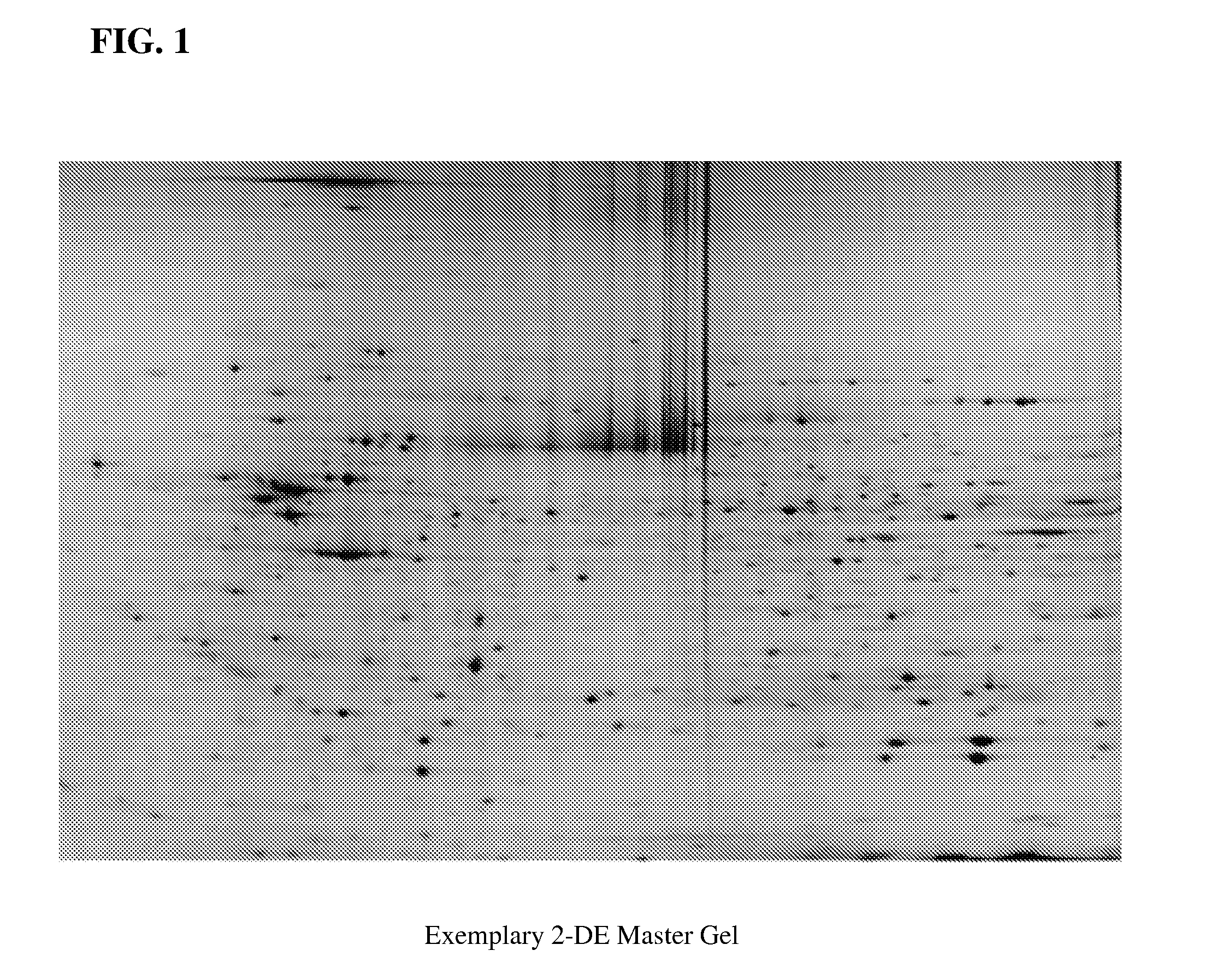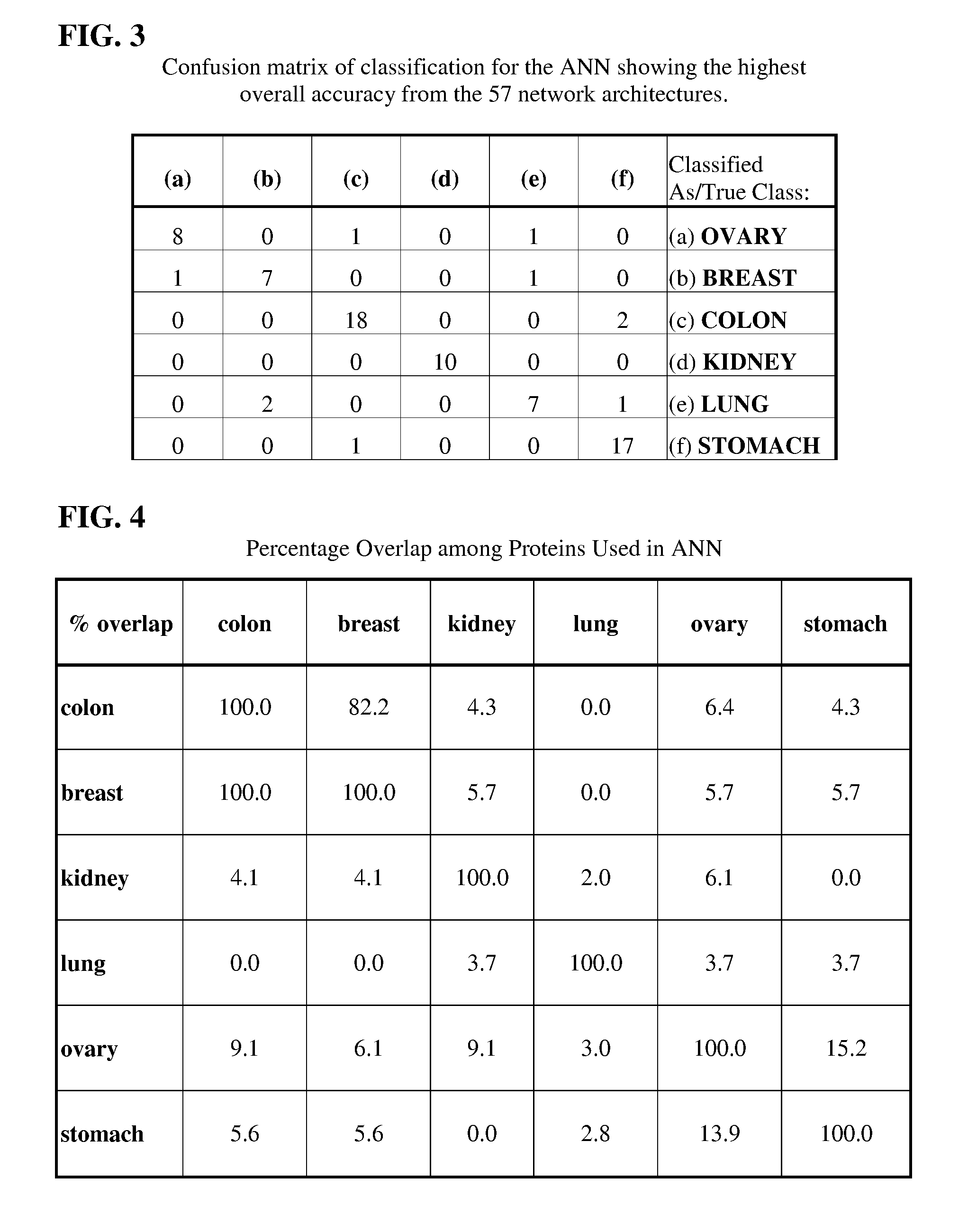Artificial neural network proteomic tumor classification
a neural network and proteomic technology, applied in the field of cancer therapy, can solve the problem that only a few markers have been identified to da
- Summary
- Abstract
- Description
- Claims
- Application Information
AI Technical Summary
Benefits of technology
Problems solved by technology
Method used
Image
Examples
Embodiment Construction
[0036]A number of adenocarcinomas still produce significant diagnostic challenges to pathologists and practicing clinicians. The unknown primary cancer, often a metastatic adenocarcinoma to sites like the liver or lungs, represents a substantial number of cases worldwide and is highly problematic. Similarly, discriminating primary tumors from organs such as the ovary versus the colon can be difficult. Since therapy still stems from the organ site-based diagnosis, correct identification of site of origin of cancer is clinically valuable. To address these problems, the inventors have profiled a significant number of human tumors using a global protein approach. The inventors have constructed an ANN, protein-based classifier that is very accurate as assessed by LOOCV in the classification of six common tumor types: lung, kidney, breast, colon, ovary, and stomach. A series of Wilcoxon Rank-Sum tests were used to identify a discriminating set of proteins. The use of this one vs. all appr...
PUM
| Property | Measurement | Unit |
|---|---|---|
| run time | aaaaa | aaaaa |
| temperature | aaaaa | aaaaa |
| final volume | aaaaa | aaaaa |
Abstract
Description
Claims
Application Information
 Login to View More
Login to View More - R&D
- Intellectual Property
- Life Sciences
- Materials
- Tech Scout
- Unparalleled Data Quality
- Higher Quality Content
- 60% Fewer Hallucinations
Browse by: Latest US Patents, China's latest patents, Technical Efficacy Thesaurus, Application Domain, Technology Topic, Popular Technical Reports.
© 2025 PatSnap. All rights reserved.Legal|Privacy policy|Modern Slavery Act Transparency Statement|Sitemap|About US| Contact US: help@patsnap.com



